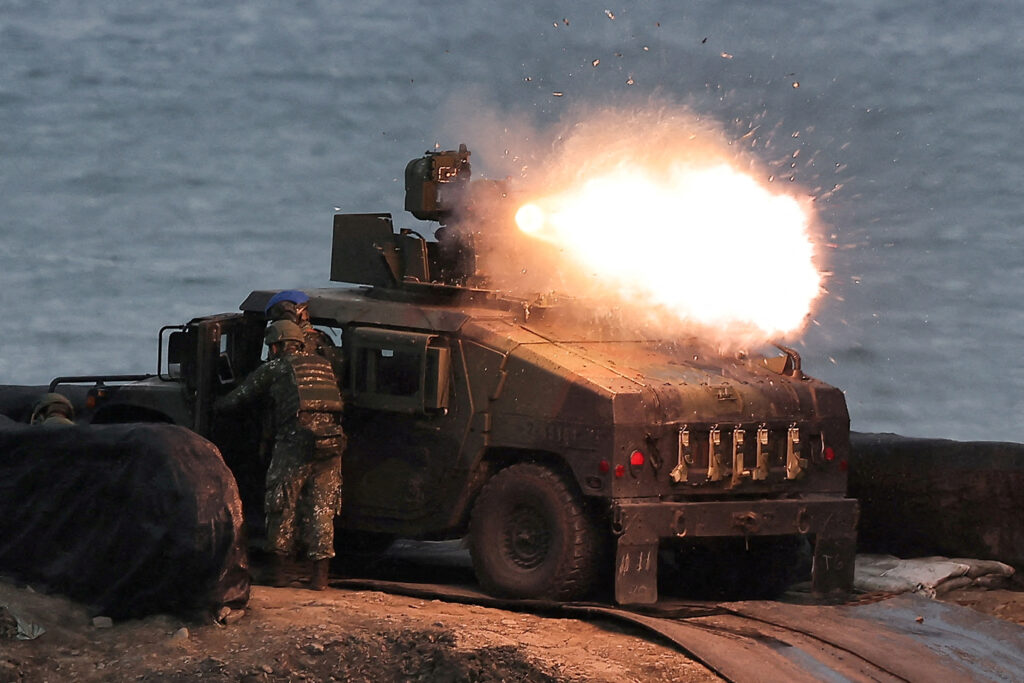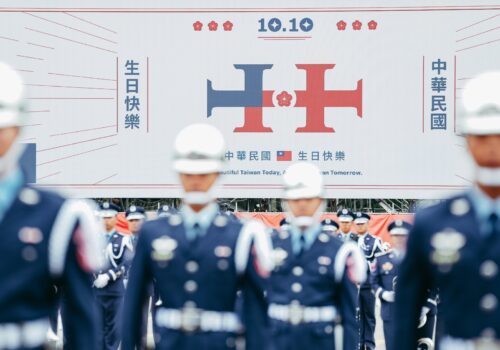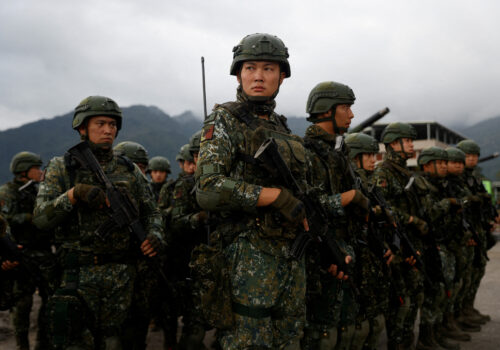On November 29, the Biden administration announced its eighteenth and potentially final military sale to Taiwan, which totaled $387 million. The next day, Taiwanese President Lai Ching-te visited Hawaii, his first transit through the United States since taking office, where he spoke about his hope that US support would continue under incoming US President Donald Trump. On many issues, however, Trump has already staked out plans that are at odds with the outgoing administration. So, is US policy toward Taiwan, too, in store for a major change?
Answering this important question requires a clear understanding of what is directly under the president’s direct authority, what may already be delegated to professional bureaucracy, and what is authorized by Congress. There are, in other words, aspects that the US president can more easily change, and there are aspects that are much more difficult to alter.
What stays the same
Recent calls from former US officials for a comprehensive review of US policy toward Taiwan further stress the need to be clear on the fundamentals. Critically, there are several aspects that are likely to remain the same; these include the foundations of US policy toward Taiwan and the ongoing military sales. Post-1979 US-Taiwan relations have been defined by the Three Communiqués, Six Assurances, and the Taiwan Relations Act (TRA). Of these three, only the TRA was passed by Congress and enacted into public law, with the authority to implement the law delegated by presidential executive order to the secretary of state. This means that the US government, by congressional mandate, is committed to both maintaining US capacity to intervene against Chinese coercion or an invasion of Taiwan and provisioning Taiwan with weapons of defensive character.
Consequently, US arms sales to Taiwan, usually handled through the well-established foreign military sale (FMS) process, with acquisition priority negotiated through the annual US-Taiwan Monterey Talks, are most likely to remain unchanged under a Trump administration. While there are debates over what equipment acquisition strategy best serves Taiwan, with reports that Taiwan is considering big-ticket items previously rejected under different administrations, the overall existence, pace, and support for FMS to Taiwan is expected to remain steady with strong support from Congress. Current delays in arms delivery to Taiwan, however, are also unlikely to be remedied due to the structural nature of the problem. (There are persistent concerns over US defense industrial capacity to keep up with demands from Ukraine, the Middle East, and Taiwan, but perhaps mores significantly, bureaucratic and service-level regulatory and procedural hurdles significantly add to the delay.) Given that Representative Michael Waltz—Trump’s appointment as the new national security advisor—previously headed the congressional TIGER Task Force looking into delays and the lack of transparency in the FMS process, there is some hope that the situation may improve in the long run.
What Trump could change
There is more uncertainty in areas subject to presidential fiat that can be easily changed and reversed. Perhaps the most significant uncertainty that is subject to presidential authority is whether the United States would ultimately intervene in a Taiwan invasion scenario. But other aspects include the continuation of arms transfers to Taiwan through the Presidential Drawdown Authority (PDA), as well as the US response to China’s gray zone coercion—the employment of all means short of war—against Taiwan.
Russia’s invasion of Ukraine and the looming “Davidson Window” of a potential 2027 Chinese invasion of Taiwan created a sense of urgency within the US policy community to bolster Taiwan’s defenses. Congress approved additional authorities for the use of PDA for the immediate transfer of defense articles and services to Taiwan at the discretion of the administration starting from 2023. To date, there have been two PDA aid packages authorized by the Biden administration. However, by its very nature, PDA requires presidential authorization for each package and will thus be subject to Trump’s personal whims. This renders his use of PDA to support Taiwan uncertain, especially considering his repeated statement that “Taiwan should pay us for defense.”
Additionally, the TRA, while mandating that the executive branch must maintain US capacity to intervene in a Taiwan invasion scenario, intentionally left some issues around the presidential authority and requirement to do so rather vague. Specifically, the TRA directs the US government to maintain the capacity to “resist any resort to force or other forms of coercion that would jeopardize the security, or the social or economic system, of the people on Taiwan.” It does not, however, define what coercion and resort of force must entail.
That ambiguity plays to China’s strength in conducting gray zone warfare and in exploiting uncertainties in US response planning. Beijing specializes in gray zone operations. From election interference and cyber intrusion to military exercises with missile overflight of Taiwan and Chinese Coast Guard integration, these gray zone operations intentionally stay below the threshold of war. They are designed to decrease available reaction time for future kinetic operations, divide and demoralize public opinion in Taiwan, and “acclimate” the United States, Taiwan, and their partners into a false sense of security under an increasingly aggressive “new normal” in which Beijing gets closer and closer to its ultimate goal of taking Taiwan, either by force or through psychological coercion. The incoming US administration should hold an internal strategic planning process as soon as possible to clarify among themselves what their red lines will be and how to categorize and respond to China’s gray zone operations. Beijing will certainly test the waters. The United States will not benefit from a muddied response that signals a lack of coherent planning or resolve.
Presidential authority also extends to executing or abolishing the long-running policy of “dual deterrence,” colloquially known as “strategic ambiguity.” Under this policy, the United States maintains a deliberate ambiguity on whether it would intervene in a Taiwan crisis to deter both a Chinese invasion of Taiwan and any moves from Taipei to unilaterally declare independence, both of which would trigger a crisis that Washington does not want. If China were to invade Taiwan, the sitting president would decide whether the United States would intervene. US President Joe Biden on multiple occasions stated publicly that he would do so, which was a step back from strategic ambiguity. In contrast, Trump’s supposed deal-making nature could potentially revert the commitment to a more ambiguous one, and US regional allies will likely perceive it as such.
How might these potential changes influence Chinese leader Xi Jinping’s calculus on whether or when to invade Taiwan? This is a harder question to answer. Lessons from Ukraine suggest that a “frog boiling in water” approach of gradual escalation is more likely. But a loss of credibility on Taiwan’s eventual reunification with China may be politically fatal for Xi. Ultimately, Xi has centralized decision making far more than his immediate predecessors, and the decision of what to do about Taiwan may come down to Xi alone.
Kitsch Liao is an assistant director of the Atlantic Council’s Global China Hub. Previously, he worked in the US Congress, in diplomatic postings, and as a cyber intelligence analyst for the private sector.
Further reading
Thu, Oct 24, 2024
Dispatch from Taiwan: China’s military drills look more frightening outside of Taiwan than from inside
New Atlanticist By Brian Kerg
The US and its allies took note when China launched large military exercises around Taiwan just after October 10. But it’s also important to pay attention to how Taiwanese reacted to Beijing’s saber-rattling.
Wed, Aug 21, 2024
How quickly can Taiwan integrate US weapon systems? Speed is essential to help deter China.
New Atlanticist By Adam Kozloski
To better prepare Taiwan to defend itself, the United States needs more transparency into Taipei’s weapons integration challenges.
Fri, Jun 28, 2024
Dispatch from Taipei: Why Taiwan’s survival may depend on deterrence through resilience
New Atlanticist By Markus Garlauskas
A repeated theme in recent discussions in Taipei was Taiwan’s ability to withstand Chinese coercion and to adapt and sustain its defenses while under attack.
Image: A U.-made TOW-2A wire-guided anti-tank missile launched by Taiwanese soldiers from a M1167 TOW carrier vehicle at the Fangshan training grounds in Pingtung, Taiwan, August 26, 2024. REUTERS/Ann Wang.



